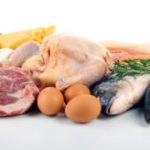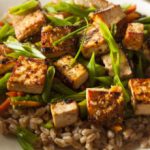Food is important throughout the year, but it tends to be one of the main focuses at Christmas time and everyone looks forward to the Christmas meal. Many residents will be enjoying glazed ham or turkey with gravy, roast vegetables and Christmas pudding. However, there will be a number of residents in your homes who require special diets. Depending on the type of allergy, intolerance, cultural requirements, some residents may not be able to enjoy the typical Christmas meal.
Food allergies, intolerance’s and cultural/religious diets in general are on the increase worldwide. Therefore, it is an integral part of training for all catering staff to ensure staff have the skills and confidence to provide the right food and fluids, without over-restricting. Providing meals that are appropriate, nutritionally adequate and also delicious for the few residents requiring a special diet will ensure these residents are also included in this special time.
Plan the Standard Christmas Menu then Adapt
To ensure no one misses out on the food pleasures of Christmas it’s important to plan well ahead of time. A good place to start is to create the standard menu for Christmas day and then adapt to the special dietary requirements of your residents.
Depending on the special diets, start by listing the dishes and associated ingredients from the standard festive menu, and then highlight the special diet limitations. From here, it’s about being creative and doing some research to look for alternatives that can be used. The aim is to keep the menu as close to the festive one as much as possible. Simply leaving out the key ingredients for the special diet is not recommended as this is likely to reduce the enjoyment for the individual involved.
Gain ideas from the resident themselves, other aged care homes, your dietitian and even the internet.
Leading Nutrition has also produced a diet manual (which lists all special diets in detail, including ingredients to avoid and replace with) which you will find useful. You can find more about the Diet Manual by clicking here.
Below are some common special diets and the alternatives you could use at Christmas time.
Texture Modified Diet
Many of the foods traditionally served at Christmas can be made suitable for texture modified diets. It may be a case of trial and error. The best way to ensure that all dishes, including sauces and desserts meet the IDDSI (International Dysphagia Diet Standardisation Initiative) food and fluid levels, use the Food Testing Methods and Drink Testing Methods
Gluten Free Diet
The Christmas meal for residents on a gluten free diet can include all the fresh meats, vegetables, and fruit. However, beware of what is used in your stuffing and gravies. Instead of using regular breadcrumbs, you could provide everyone with a nut stuffing or use gluten free bread crumbs. An extravagant pavlova is usually great for gluten free due to cornflour (made from corn) and egg whites are the main ingredients. If you would still like to make a Christmas pudding, gluten free flour can be used for this. It may be easier to make gluten-free items for everyone else as well.
Remember if your resident has Coeliac Disease, they can be symptomatic even with tiny traces of gluten, so ensure your kitchen benches, cutlery and utensils are extremely clean to avoid cross-contamination. It is not suitable to provide gluten containing ingredients for residents with Coeliac disease, even for one day.
Dairy Free Diet or Low Lactose Diet
Consider anything that has butter, yoghurt, cheese, cream, milk or ice cream in it. These are usually sauces, dressings and desserts. You can use coconut milk or almond milk instead of dairy milk in desserts such as in a coconut pannacotta. Or make alternative sauces or custards with a soy milk alternative. If serving pavlova or cakes you could serve a different sauce such as a fruit couli instead of cream. There are also many recipes on the internet for a chocolate pudding that uses avocado to give it it’s creaminess.
Remember to discuss this with your residents as the degree of intolerance can vary between people. Some people may be able to tolerate more small amounts of dairy so you may not need to find replacements for all dairy containing ingredients.
Nut – Free
This one is a little easier but still note cross-contamination, especially if your resident has severe allergies. Consider stuffing, puddings and desserts and any nibbles you may serve.
Vegetarian or Vegan
Remember to double check what items your residents are not able to have. Vegetarianism and veganism can be quite different from person to person. It’s important to have the right information by communicating with your residents.
Generally, people who identify as a vegetarian choose not to eat meats but can still have dairy and eggs. Whereas people who are vegan choose not to include meat, eggs, dairy or jelly (due to animal containing gelatine).



